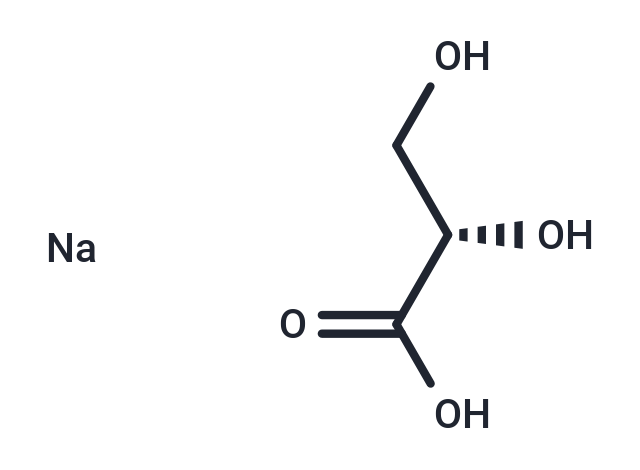Shopping Cart
Remove All Your shopping cart is currently empty
Your shopping cart is currently empty
L-Glyceric acid sodium, a urinary metabolite, is predominantly found in individuals with the rare inherited metabolic disorder L-glyceric aciduria. This compound is a diagnostic tool for identifying primary hyperoxaluria type 2 (PH2) and distinguishing it from primary hyperoxaluria type 1 (PH1) based on its excretion pattern.


| Description | L-Glyceric acid sodium, a urinary metabolite, is predominantly found in individuals with the rare inherited metabolic disorder L-glyceric aciduria. This compound is a diagnostic tool for identifying primary hyperoxaluria type 2 (PH2) and distinguishing it from primary hyperoxaluria type 1 (PH1) based on its excretion pattern. |
| In vitro | Primary hyperoxaluria type 2 (PH2), or L-glyceric aciduria, results from deficiencies in D-glycerate dehydrogenase and glyoxylate reductase, leading to the excretion of L-glyceric acid, a key diagnostic marker for PH2[1][2]. |
| Molecular Weight | 128.06 |
| Formula | C3H5NaO4 |
| Cas No. | 146298-95-5 |
| Smiles | [Na].OC[C@H](O)C(O)=O |
| Relative Density. | no data available |
| Storage | Powder: -20°C for 3 years | In solvent: -80°C for 1 year | Shipping with blue ice/Shipping at ambient temperature. |
| Size | Quantity | Unit Price | Amount | Operation |
|---|

Copyright © 2015-2026 TargetMol Chemicals Inc. All Rights Reserved.